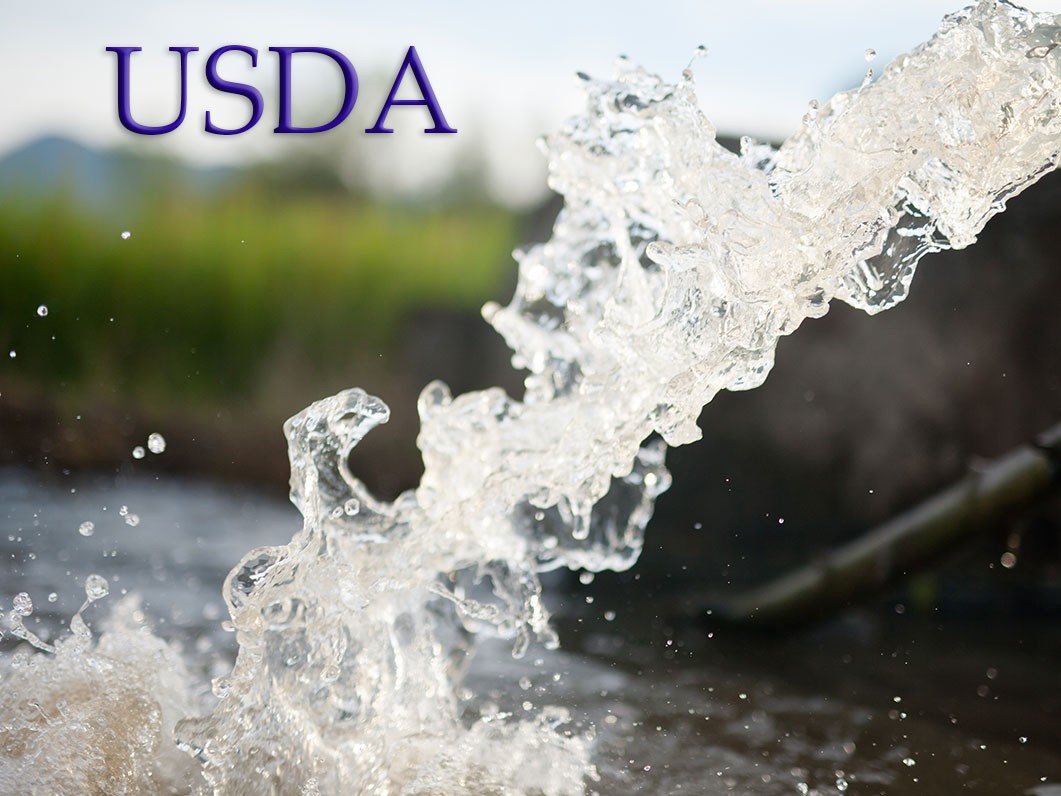The U.S. Department of Agriculture announced on Feb. 13 its “new investments and strategies to help farmers and ranchers conserve water, address climate change and build drought resilience in the West, supported in part by funding from the Inflation Reduction Act (IRA).”
A press release from the agency said, “The Western Water and Working Lands Framework for Conservation Action is a comprehensive, multi-state strategy under USDA’s Natural Resources Conservation Service (NRCS) to address key water and land management challenges across 17 Western States. This is the latest NRCS-issued Framework for Conservation Action, all of which provide direction, support and coordination to address resource concerns and threats across state boundaries and leverage new scientific tools to guide strategic program implementation on the ground. The Framework includes guidelines for identifying vulnerable agricultural landscapes and 13 strategies to help NRCS state leaders, water resource managers, and producers respond to priority challenges.
Guided by this new framework,” the WaterSMART Initiative will invest $25 million in three new priority areas and 37 existing priority areas, assisting communities and producers in the West.”
NRCS Chief Terry Cosby said, “WaterSMART investments are being directed where they can have the most impact, and the new Western Water and Working Lands Framework for Conservation Action lays the foundation for helping producers and communities address pressing climate challenges and build resiliency for the future. Complemented by investments from the Inflation Reduction Act, USDA is utilizing this framework and all available tools to deliver assistance that the severity of the water supply challenges in the West demand.”
The release continued, “In many areas of the dry West, producers are struggling to irrigate their crops due to inadequate precipitation. Water supply in these areas is impacted by drought, increasing demand, and climate change.”
NRCS said it has identified “six major water and working land management challenges resulting from threats to water supply in the West.” They are:
- Forecasting water supply.
- Sustaining agricultural productivity.
- Protecting groundwater availability.
- Protecting surface water availability.
- Managing and restoring rangelands and forestlands.
- Responding to disruptions from catastrophic events.
Strategies include:
- Improve reliability of water supply forecasts.
- Improve soil moisture and irrigation water management.
- Improve water and nutrient management in crop fields and pastures.
- Modernize water infrastructure.
- Improve community water supply by completing watershed projects.
- Increase reuse of wastewater for agriculture and conservation.
- Prolong aquifer life.
- Complete managed aquifer recharge projects.
- Reduce surface water withdrawals.
- Install conservation systems that protect water quality.
- Restore and protect streams and wetlands.
- Manage and restore rangelands and forestlands.
- Increase resilience during disaster recovery.
“NRCS will use this framework to set comparable goals for effective program delivery and coordinate and track progress on helping individuals, entities, and communities across the West address their management, conservation, and resiliency needs,” the release continued.
It said, “With the WaterSMART Initiative a $25 million investment in three new priority areas and 37 existing priority areas in the West is the result of a collaboration with NRCS and the Department of Interior’s (DOI) WaterSMART Initiative to help farmers and ranchers conserve water and build drought resilience in their communities. These investments complement projects led by irrigation districts, water suppliers, and other organizations.
Three new priority areas include:
- California: Madera Irrigation District Area (Funding amount: $1.5 million)
- Hawaii: Kohala Watershed Partnership Area (Funding amount: $345,000)
- Washington: Quincy Columbia Basin Irrigation District West Canal Area (Funding amount: $1.8 million)
And the release also said, “This week, the Department of Interior Bureau of Reclamation also announced $728 million in new investments for water conservation measures in the West.”
It added, “Farmers, ranchers, irrigation districts, groundwater management entities, municipalities, tribes, and others across the West are working together to secure clean and available water supplies, healthy soils, resilient landscapes, and thriving agricultural communities, now and in the future. NRCS is working to assist them and accelerate voluntary conservation of water and working lands resources.”


